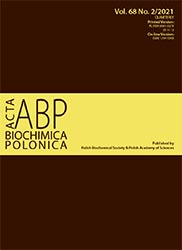Overexpression of miR-874-3p alleviates LPS-induced apoptosis and inflammation in alveolar epithelial cell by targeting EGR3/NF-κB
Abstract
Objective: MicroRNA (miRNA) is implicated in the pathogenic mechanism of pneumonia. Role of miR-874-3p in pediatric pneumonia was therefore evaluated in this study. Methods: Expression levels of miR-874-3p in the serum samples from pediatric patients with pneumonia and LPS-treated HPAEpiC were determined by RT-qPCR (reverse transcription quantitative real-time PCR). Secretion of inflammatory factors in LPS-treated HPAEpiC were determined by qRT-PCR and ELISA. Cell viability and apoptosis were evaluated by CCK8 and flow cytometry, respectively. HPAEpiC was used for the validation of binding target of miR-874-3p. Mechanism was determined by NF-κB promoter activity assay. Results: MiR-874-3p was reduced in serum samples of pediatric patients with pneumonia, and LPS treatment dose-dependently decreased miR-874-3p expression in HPAEpiC. TNF-α and IL-1β expression levels were increased in HPAEpiC post LPS treatment. Over-expression of miR-874-3p attenuated LPS-induced increase of TNF-α and IL-1β and reversed LPS-induced decrease of cell viability and increase of cell apoptosis in HPAEpiC. EGR3 (early growth response 3), increased in LPS-induced HPAEpiC, was a target gene of miR-874-3p. EGR3 over-expression reversed miR-874-3p over-expression-induced increase of cell viability, decrease of cell apoptosis, TNF-α and IL-1β in LPS-induced HPAEpiC. Over-expression of miR-874-3p reduced p65 expression and NF-κB promoter activity in LPS-induced HPAEpiC, while EGR3 over-expression reversed these suppressive effects. Conclusion: MiR-874-3p negatively regulates EGR3 expression to promote cell viability and inhibit apoptosis as well as inflammation in LPS-treated HPAEpiC via suppression of NF-κB pathway, suggesting a potential therapeutic strategy for pneumonia.
Acta Biochimica Polonica is an OpenAccess quarterly and publishes four issues a year. All contents are distributed under the Creative Commons Attribution-ShareAlike 4.0 International (CC BY 4.0) license. Everybody may use the content following terms: Attribution — You must give appropriate credit, provide a link to the license, and indicate if changes were made. You may do so in any reasonable manner, but not in any way that suggests the licensor endorses you or your use.
Copyright for all published papers © stays with the authors.
Copyright for the journal: © Polish Biochemical Society.


